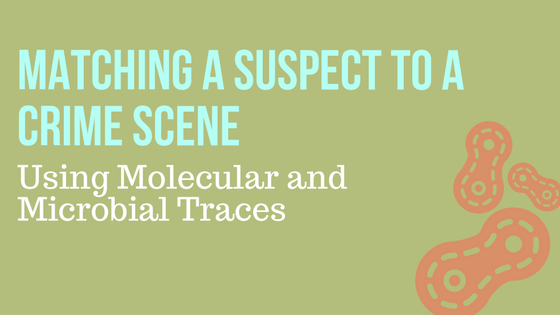If we know that humans leave behind chemical and microbial traces in an environment, and we also know that these traces are unique to each human based on their lifestyle choices, could we then determine which human had interacted with an environment? If so, this would have tremendous impacts for forensic science. Imagine being able to know with certainty that you could link a particular object to an individual and place a suspect at the scene.
This is the question that researchers at the UC San Diego School of Medicine and Center for Microbiome Innovation have set out to answer. In a recently published article in Scientific Reports, they ventured that by studying molecular and microbial traces in an office, they’d be able to determine what objects had been touched by certain individuals.
written by: tara luther, promega
In order to test this hypothesis, the researchers used 3D molecular cartography to visual surface sampling, which allowed the researchers to collect samples across a space and then map the data using coordinates on the 3D model.
The office space consisted of a desk, bookshelf, conference table, four chairs, garbage and recycling bins, a carpet-covered floor, phones, computers and computer accessories, and walls. Four volunteers inhabited the office environment for different lengths of time over the course of a couple of years. While volunteer #3 was the main inhabitant of the office, volunteer #1 had only visited the office twice in the past two years, and volunteers #2 and #4 were guests in the office 2-4 times per month for visits ranging from minutes to hours each visit.
Would the researchers be able to determine which objects the volunteers had interacted with? The researchers took samples from 390 sites in the office and 276 sites on the volunteers, including their skin, clothes, and accessories. The team took two samples from each sample site, so that they could obtain both chemical and microbial inventories. One swab from each sample site was then subjected to untargeted liquid chromatography tandem mass spectrometry (LC-MS-/MS) to detect small molecules. The second swab was subjected to 16S rRNA amplicon sequencing to assess the microbial taxa. The data from these tests was then overlaid onto the 3D model. To assist in assigning ownership of molecules to a particular individual, the volunteers provided 27 personal care products to the research team.
The researchers were not surprised to see that the majority of annotated molecules found in the office could be traced back to a volunteer’s individual habits and daily routines. For instance, DEET insect repellent was found on the phone of volunteer #3 as well as the desk he was sitting next to. The team also found Norvasc™ (a calcium channel blocker used to treat high blood pressure) on the hands and face of volunteer #1 as well as the objects sitting in front of him. Similarly, the researchers discovered many distinct localizations of specific bacterial communities that could be traced back to the volunteers.
Using statistical analysis, the team was able to determine the uniqueness of each volunteer in relation to their microbiota and chemicals present on their skin. They then used a bioinformatics tool to track which volunteer had touched certain objects. Chemistries from sample sites within the office were highly correlated to the main inhabitant of the office, volunteer #3, while the chemical and microbial distribution of volunteers #1, 2, and 4 were limited to sites that were closer to where the volunteers had been physically sitting or objects that they frequently interacted with or had brought into the room.
Based on their findings, the researchers conclude that modern microbial DNA and untargeted mass spectrometry technologies could provide many clues that may otherwise be missed. Used in combination with existing forensic techniques, these technologies could assist with reconstructing a crime scene or narrowing down potential suspects.
WOULD YOU LIKE TO SEE MORE ARTICLES LIKE THIS? SUBSCRIBE TO THE ISHI BLOG BELOW!


